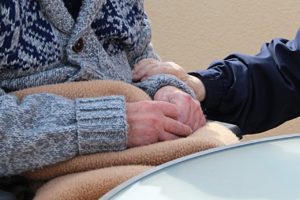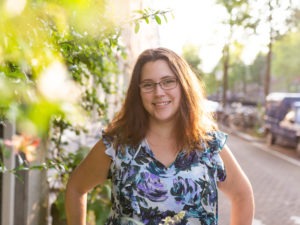Guide to Safely Spending Time Outside
 When the weather is nice, senior living facilities can increasingly make use of their outdoor spaces. Because of the pandemic, letting residents go outside requires more thought and planning than it would in previous years. With some precautions, residents can still enjoy their outdoor spaces and can even participate in more activities outside.
When the weather is nice, senior living facilities can increasingly make use of their outdoor spaces. Because of the pandemic, letting residents go outside requires more thought and planning than it would in previous years. With some precautions, residents can still enjoy their outdoor spaces and can even participate in more activities outside.
Top Reasons to Get Residents Outside
Heading outdoors during the COVID-19 pandemic has obvious benefits. While indoor ventilation and space restrictions can make it difficult to maintain social distancing during activities, going outdoors solves these problems. But there are other reasons to prioritize getting residents outdoors safely.
A study by the University of Michigan found that students experienced memory test scores that were almost 20% higher after taking a walk around an arboretum. Another study found that individuals with depression experienced an increase in memory function after taking walks in nature.
A 2010 study also found that participants who spent time walking in the forest had lower anxiety and fewer bad moods than other study participants. These results were particularly evident in participants who were mentally ill. Spending time outdoors has also been shown to lower blood pressure, improve focus, and even boost the immune system.
With so many benefits to getting outdoors, consider the following ways your senior care facility can help to keep residents safe whenever they go outside.
Strategically Position Outdoor Furniture
Groups of benches and chairs that are crowded together will cause residents to naturally congregate. To help encourage social distancing, reposition furniture ahead of time. This may mean removing extra chairs and possibly storing some furniture away for the time being. If your facility has enough acreage, you might relocate furniture so that it’s well-distanced but still allows residents to interact safely.
While it may be tempting to position furniture toward the front of the facility, this can encourage visiting families to go directly to their loved ones if they see them outside. To encourage families to continue checking in and following the facility’s visitation policy, avoid placing furniture in areas where it’s easily seen from the parking lot.
Rope Off Designated Areas
Consider using temporary fencing and roping to help section off areas. This can be a useful technique when breaking a larger area down into smaller sections. If there are areas where visitors frequently congregate, closing these sections off can help to prevent unexpected visits and larger gatherings.
Establish a Sanitization Routine
Incorporate outdoor furniture and spaces into the facility’s existing sanitation routine. Ensure that these spaces are cleaned regularly and in between each use. It can also be helpful to stock cleaning supplies by each location. Consider installing hand sanitizer dispensers outdoors, too.
Have Staff Present
While residents may be aware of social distancing rules indoors, going outside can create a less formal feel and they may start to forget about social distancing. If staff are present outdoors, they can monitor this and remind seniors of the importance of social distancing as needed.
Consider Taking Indoor Activities Outdoors
Encouraging residents to spend time outdoors offers many benefits, including mood-boosting perks and a change of scenery. If your facility can ensure that outdoor areas are safe and that equipment like benches and chairs are regularly disinfected, then you might consider encouraging activity leaders to take indoor activities outdoors during good weather. Book clubs, bingo games, art activities, yoga classes, and more can all be safely performed outdoors.
When planning out how to use outdoor spaces, try to get all staff involved, including activity directors, head caregivers, and groundskeepers. With a unified approach, your facility can create a plan to help residents safely enjoy outdoor spaces.

Paige Cerulli is a contributing writer to i Advance Senior Care.
Related Articles
Topics: Activities , Departments , Featured Articles , Resident Care , Senior Environments











